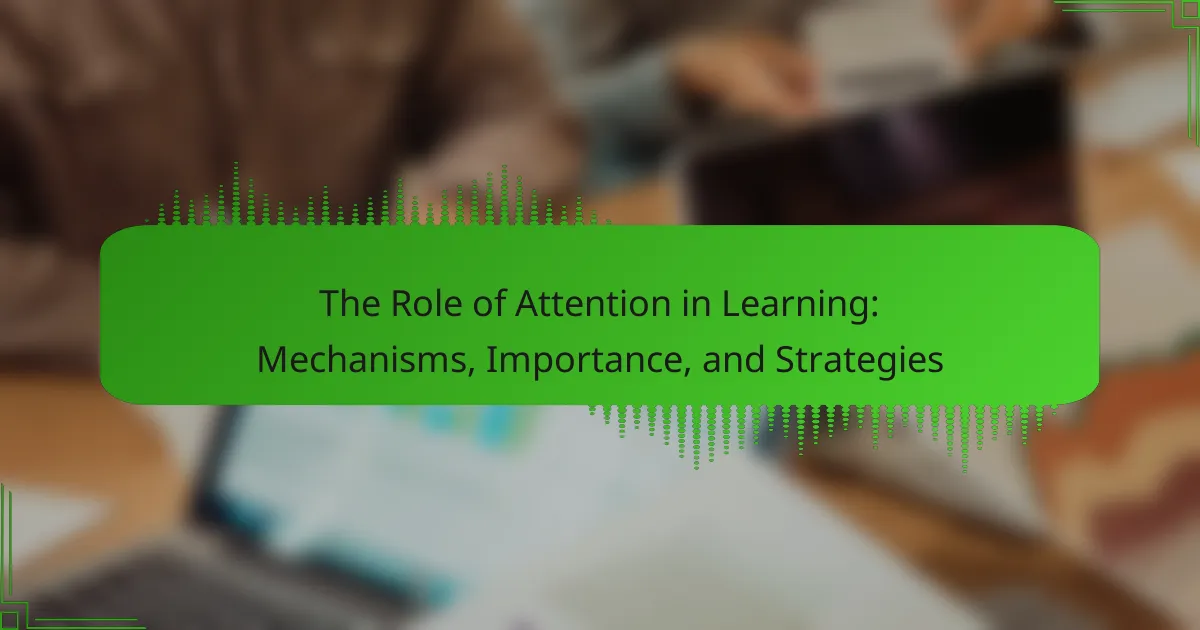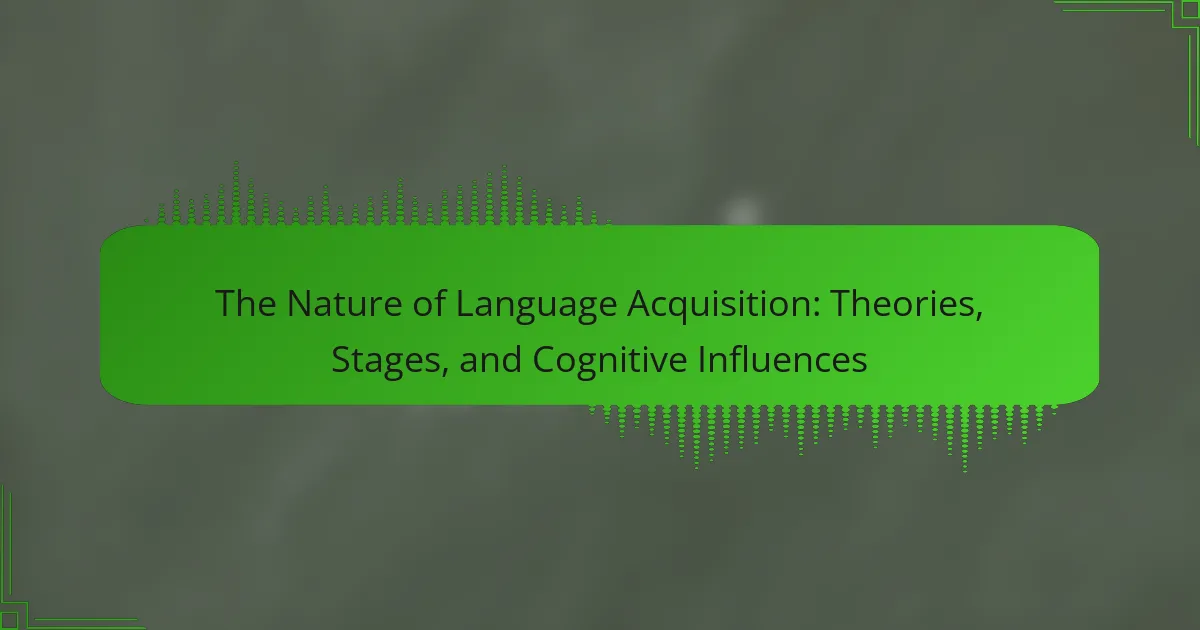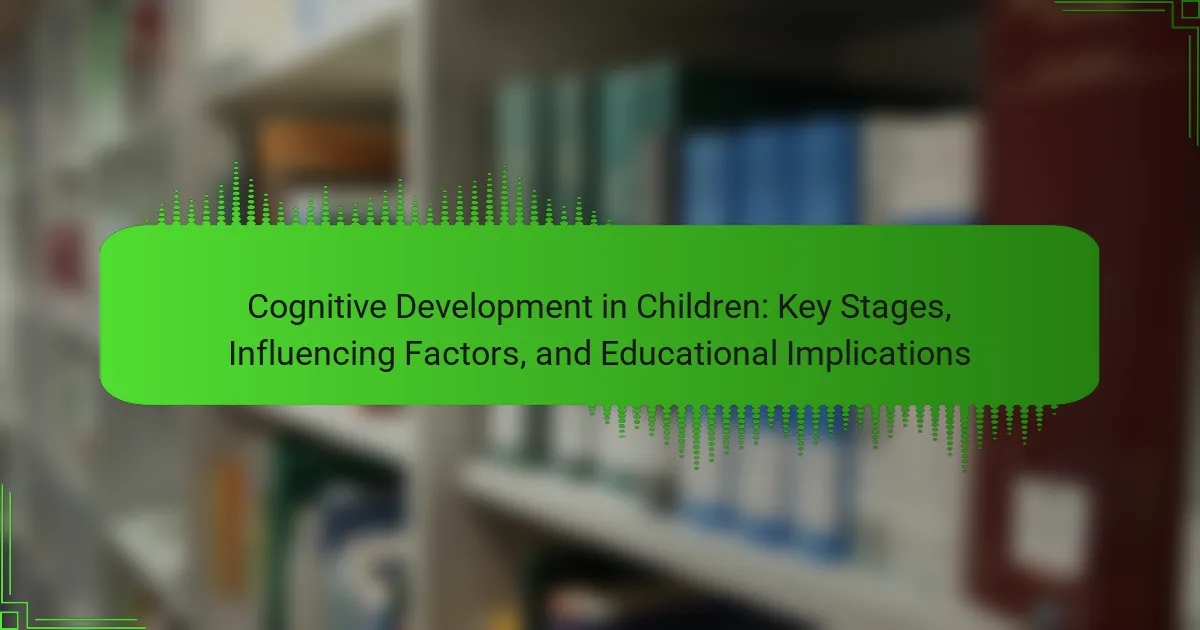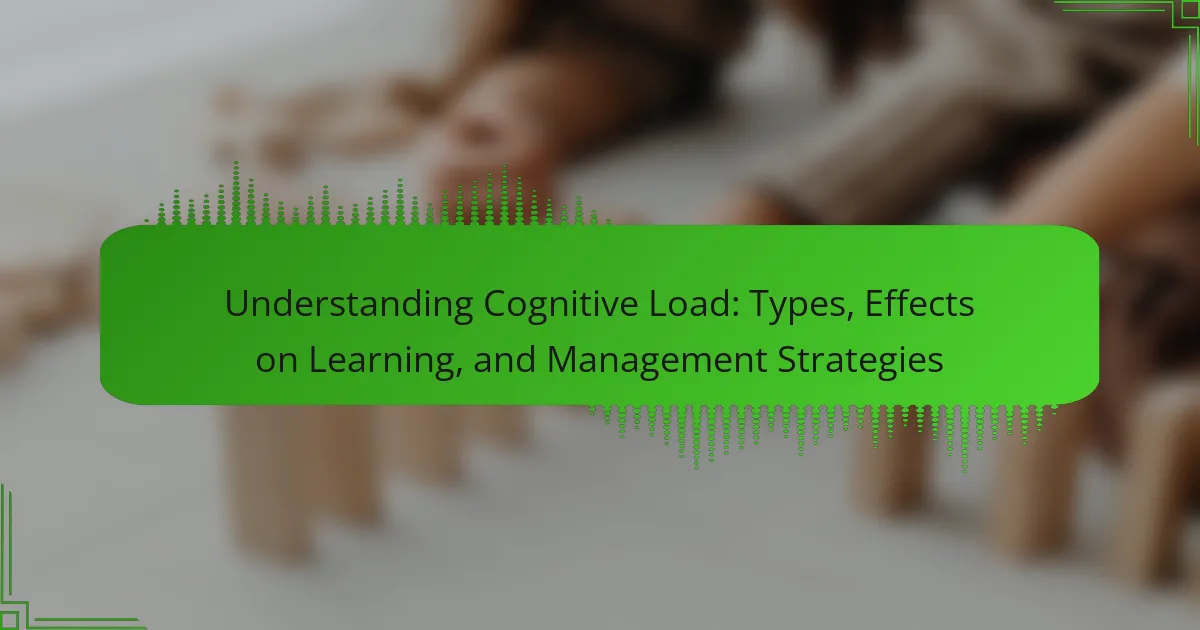Attention is a critical cognitive mechanism in the learning process, influencing how information is processed and retained. It involves selective attention, which helps individuals focus on relevant stimuli while ignoring distractions, and sustained attention, which enables prolonged focus. Effective attention management enhances memory formation and retrieval, leading to better learning outcomes. Strategies to improve attention in educational settings include active engagement techniques, varied instructional methods, and minimizing distractions, all of which have been shown to significantly boost student performance and understanding. Understanding the role of attention and its underlying mechanisms is essential for optimizing learning experiences.
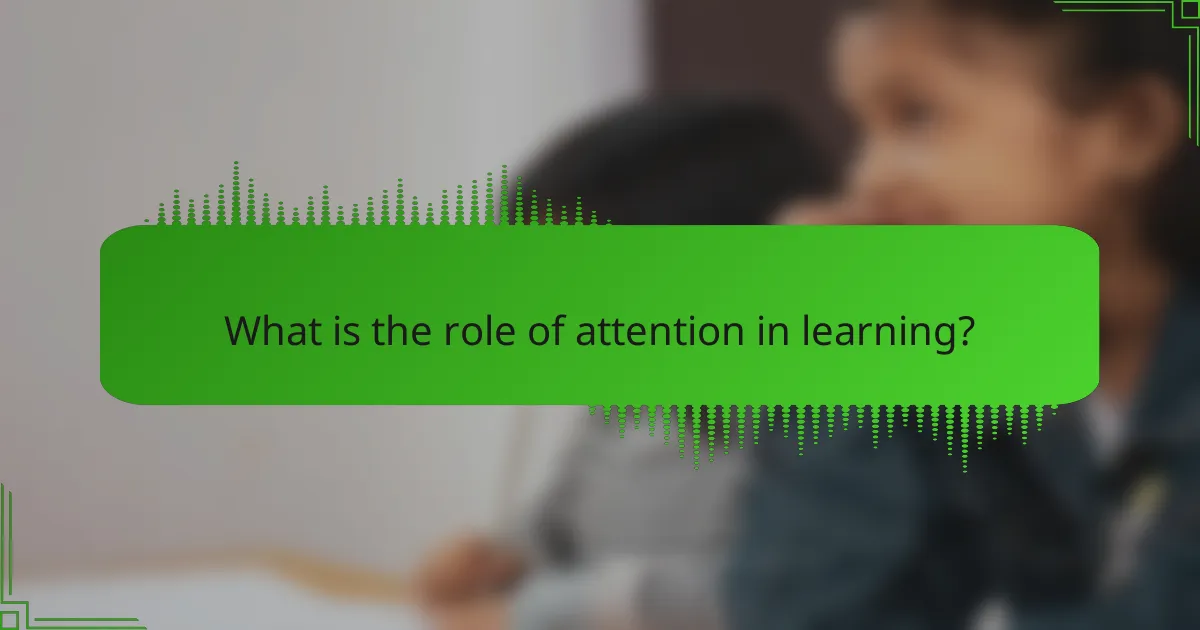
What is the role of attention in learning?
Attention plays a crucial role in learning by determining what information is processed and retained. It allows individuals to focus on relevant stimuli while filtering out distractions. This selective focus enhances memory formation and retrieval. Research shows that attention increases the efficiency of cognitive resources. For example, studies indicate that students who maintain attention during lectures perform better on assessments. Attention also facilitates deeper processing of information, leading to improved understanding. Overall, effective attention management is essential for successful learning outcomes.
How does attention influence the learning process?
Attention significantly influences the learning process by determining what information is processed and retained. When learners focus their attention, they enhance their ability to absorb and understand new material. Attention acts as a filter, prioritizing relevant information while disregarding distractions. Research shows that focused attention can improve memory retention by up to 50%. For instance, studies indicate that students who engage in active listening demonstrate better academic performance. Additionally, sustained attention is linked to deeper cognitive processing, leading to better comprehension and application of knowledge. Therefore, attention is crucial for effective learning and overall academic success.
What are the different types of attention relevant to learning?
The different types of attention relevant to learning include focused attention, sustained attention, selective attention, and divided attention. Focused attention refers to the ability to concentrate on a specific stimulus or task. Sustained attention involves maintaining focus over an extended period. Selective attention allows individuals to filter out distractions and concentrate on relevant information. Divided attention enables multitasking, where a person can process multiple sources of information simultaneously. These types of attention are critical for effective learning, as they influence information retention and comprehension. Research indicates that effective attention management can enhance academic performance and cognitive function.
How does focused attention differ from divided attention in learning contexts?
Focused attention involves concentrating on a single task or piece of information. This type of attention enhances learning by allowing deeper processing of material. Divided attention, on the other hand, refers to splitting focus between multiple tasks or stimuli. This often leads to reduced cognitive resources allocated to each task. Research shows that focused attention results in better retention and understanding of information compared to divided attention. For example, studies indicate that learners perform significantly better on tasks requiring focused attention versus those with divided attention, as their cognitive load is optimized.
Why is attention considered crucial for effective learning?
Attention is crucial for effective learning because it enables the brain to process and encode information. When attention is focused, learners can absorb details more efficiently. This focused attention enhances memory retention and comprehension. Research shows that selective attention allows individuals to prioritize relevant information while filtering out distractions. The brain’s limited capacity for processing information means that without attention, learning becomes fragmented. Studies indicate that multitasking can significantly reduce learning outcomes due to divided attention. Therefore, maintaining attention is essential for achieving deeper understanding and long-term retention of knowledge.
What cognitive processes are enhanced by attention during learning?
Attention enhances several cognitive processes during learning. These processes include perception, memory encoding, and information retrieval. Attention improves perception by allowing learners to focus on relevant stimuli. This focus helps filter out distractions, making it easier to process information. Memory encoding is also enhanced as attention facilitates the transfer of information into long-term memory. Research shows that focused attention increases the likelihood of retaining information. Furthermore, attention aids in information retrieval by enabling quicker access to stored knowledge. Studies indicate that when attention is directed, individuals can recall information more effectively. Overall, attention plays a crucial role in optimizing cognitive functions essential for learning.
How does attention impact memory retention and recall?
Attention significantly impacts memory retention and recall. When individuals focus their attention on specific information, they enhance their ability to encode that information into memory. Research indicates that selective attention helps filter out distractions, allowing for deeper processing of relevant stimuli. For instance, studies show that participants who pay close attention during learning tasks demonstrate improved recall rates compared to those who are distracted. This is supported by findings from the American Psychological Association, which highlight that attention enhances both short-term and long-term memory retention. Therefore, attention plays a crucial role in determining how well information is remembered and retrieved later.
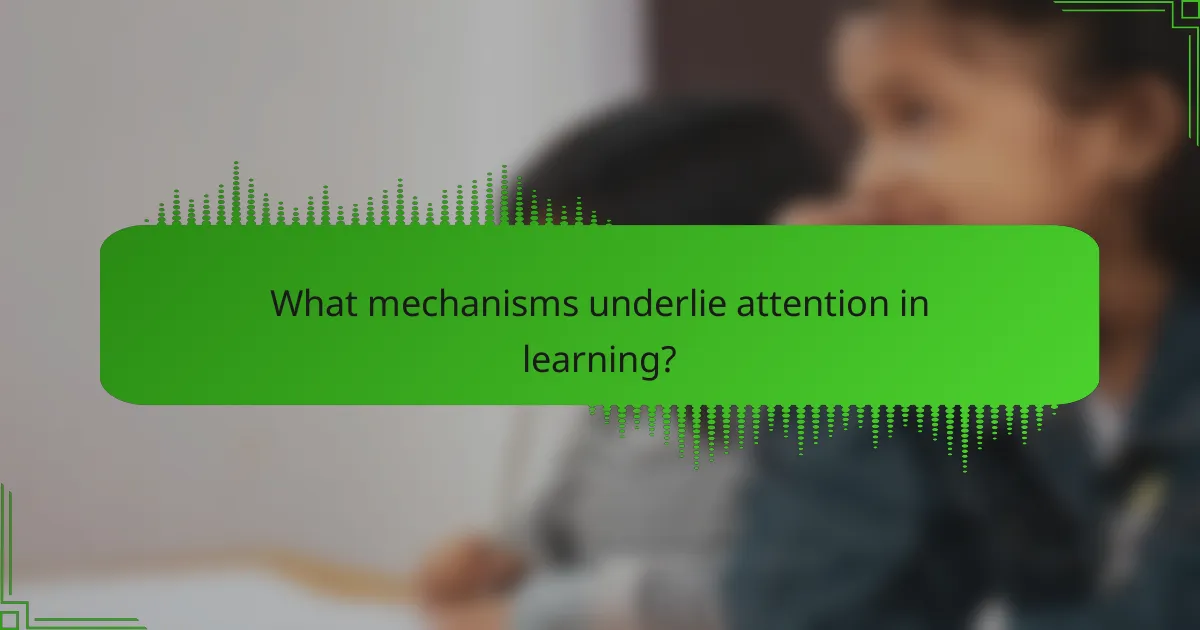
What mechanisms underlie attention in learning?
Attention in learning is primarily driven by cognitive mechanisms that enable focus and information processing. These mechanisms include selective attention, which filters relevant stimuli while ignoring distractions. Another key mechanism is sustained attention, allowing individuals to maintain focus over time. Additionally, executive attention coordinates cognitive processes, helping to manage tasks and prioritize information. Research indicates that these mechanisms are influenced by neural networks, particularly in the prefrontal cortex and parietal lobes. Neuroimaging studies show that activation in these areas correlates with improved learning outcomes. Overall, these mechanisms are essential for effective information acquisition and retention in educational contexts.
How do neurological factors contribute to attention in learning?
Neurological factors significantly contribute to attention in learning by influencing cognitive processes. The brain regions involved in attention include the prefrontal cortex, parietal lobes, and thalamus. These areas work together to filter relevant information from distractions. Neurotransmitters like dopamine and norepinephrine play crucial roles in modulating attention. For instance, dopamine enhances focus and motivation, while norepinephrine increases alertness. Research indicates that deficits in these neurotransmitters can lead to attention-related disorders, impacting learning. Studies show that effective attention mechanisms improve information retention and comprehension. Thus, the neurological basis of attention is essential for successful learning outcomes.
What role do neurotransmitters play in the attention process?
Neurotransmitters are essential for the attention process. They facilitate communication between neurons, impacting cognitive functions. Key neurotransmitters include dopamine, norepinephrine, and acetylcholine. Dopamine is linked to reward and motivation, enhancing focus. Norepinephrine increases alertness and responsiveness to stimuli. Acetylcholine plays a critical role in sustaining attention and memory. Research indicates that imbalances in these neurotransmitters can impair attention. For instance, attention deficit hyperactivity disorder (ADHD) is associated with dopamine dysregulation. Thus, neurotransmitters significantly influence how attention is allocated and maintained.
How does brain structure influence attention during learning?
Brain structure significantly influences attention during learning by affecting how information is processed. Key areas such as the prefrontal cortex and parietal lobes play critical roles in attention regulation. The prefrontal cortex is involved in executive functions, including decision-making and focus. It helps prioritize information and filter distractions. The parietal lobes process sensory information and contribute to spatial awareness. They enable individuals to concentrate on relevant stimuli. Research indicates that structural differences in these brain areas can affect attention span and learning outcomes. For instance, studies show that individuals with larger prefrontal cortex volumes often exhibit better attention control. Overall, brain structure directly impacts the efficiency of attention during learning processes.
What are the psychological theories explaining attention in learning?
Cognitive Load Theory explains attention in learning by emphasizing the limitations of working memory. This theory posits that learners can only process a limited amount of information at one time. When cognitive load is too high, attention is diverted, hindering learning. Evidence shows that instructional design should minimize extraneous load to enhance learning outcomes.
Selective Attention Theory focuses on the ability to concentrate on specific stimuli while ignoring others. This theory highlights how learners filter information based on relevance. Research indicates that selective attention improves retention and comprehension by prioritizing important information.
The Dual Coding Theory suggests that information is better remembered when presented in both verbal and visual formats. This theory asserts that combining words with images enhances attention and understanding. Studies have shown that learners who engage with dual-coded materials perform better in recall tasks.
Overall, these psychological theories provide frameworks for understanding how attention influences learning processes.
How do selective attention theories apply to educational settings?
Selective attention theories are crucial in educational settings as they explain how students focus on relevant information while ignoring distractions. These theories suggest that attention is a limited resource that can be directed towards specific stimuli. In classrooms, this means that teachers can enhance learning by structuring lessons to minimize distractions. For instance, using clear visuals and concise instructions can help direct students’ focus. Research indicates that students who engage in selective attention perform better academically. A study by Posner and Petersen (1990) highlights that effective attention management can lead to improved cognitive processing in learning environments. Thus, applying selective attention theories can significantly enhance educational outcomes.
What is the significance of attention span in learning outcomes?
Attention span significantly influences learning outcomes. A longer attention span allows for deeper processing of information. This leads to better retention and understanding of the material. Research shows that students with higher attention spans perform better academically. For example, a study by the University of California found that attention span directly correlates with test scores. Shorter attention spans can hinder comprehension and increase cognitive overload. Therefore, cultivating attention span is crucial for effective learning.
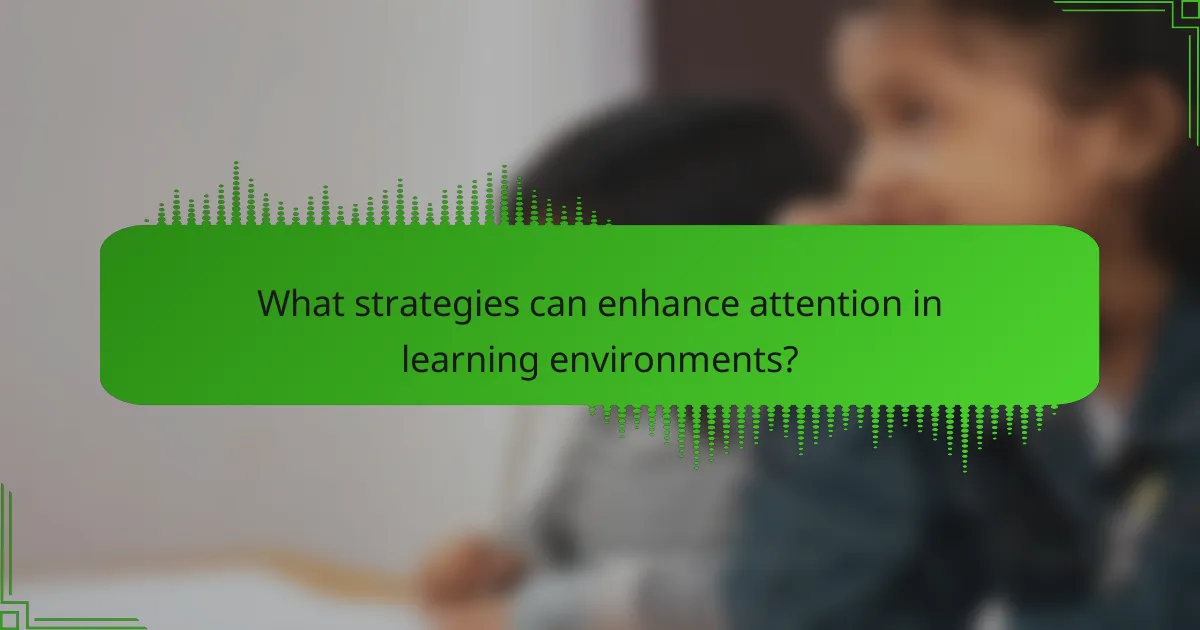
What strategies can enhance attention in learning environments?
In learning environments, strategies that enhance attention include active engagement techniques, varied instructional methods, and minimizing distractions. Active engagement techniques, such as group discussions and hands-on activities, promote participation and focus. Varied instructional methods, like multimedia presentations and interactive technology, cater to different learning styles. Minimizing distractions involves creating a conducive learning environment by reducing noise and clutter. Research indicates that these strategies can significantly improve student attention and retention of information, as demonstrated in studies like those by Hattie (2009) which emphasize the impact of engagement on learning outcomes.
How can educators foster attention among students?
Educators can foster attention among students by implementing engaging teaching strategies. These strategies include interactive activities, multimedia resources, and real-world applications. Engaging lessons capture students’ interest and encourage active participation. Research shows that active learning techniques improve attention and retention. For example, a study by Freeman et al. (2014) found that students in active learning environments performed better than those in traditional lectures. Additionally, incorporating breaks during lessons can help maintain focus. Short, structured breaks allow students to recharge their attention. Overall, varied instructional methods and attention to student engagement are essential for fostering attention in the classroom.
What classroom techniques improve student focus and engagement?
Active learning techniques improve student focus and engagement. These techniques include group discussions, problem-solving tasks, and hands-on activities. Research indicates that active participation enhances retention and understanding. A study by Freeman et al. (2014) found that students in active learning environments performed better than those in traditional lectures. Additionally, incorporating technology, such as interactive quizzes and educational apps, can capture students’ attention. Visual aids and multimedia presentations also support engagement by catering to different learning styles. Regular feedback and formative assessments keep students motivated and focused on their learning objectives.
How does the learning environment affect students’ attention levels?
The learning environment significantly impacts students’ attention levels. Factors such as classroom design, noise levels, and lighting can enhance or hinder focus. A well-organized space reduces distractions and promotes engagement. Research shows that natural light improves concentration and mood. For instance, a study by Heschong Mahone Group found that classrooms with windows increased student performance by 20%. Additionally, collaborative learning settings have been linked to higher attention spans. This is because interaction fosters motivation and interest. Conversely, chaotic environments can lead to decreased attention and increased stress. Thus, the learning environment is crucial for optimizing student attention.
What practical tips can individuals use to improve their attention while learning?
Individuals can improve their attention while learning by implementing specific strategies. First, they should eliminate distractions in their environment. This includes turning off notifications on devices and finding a quiet space. Second, using the Pomodoro Technique can enhance focus. This method involves studying for 25 minutes followed by a 5-minute break. Third, setting clear goals for each study session helps maintain direction. This can be done by writing down specific objectives. Fourth, practicing mindfulness techniques can improve concentration. Research shows that mindfulness meditation increases attention span. Lastly, incorporating physical exercise into the routine can boost cognitive function. Studies indicate that regular physical activity enhances brain health and focus.
How can mindfulness practices enhance attention during study sessions?
Mindfulness practices can enhance attention during study sessions by improving focus and reducing distractions. These practices, such as meditation and deep breathing, train the brain to maintain concentration. Research indicates that mindfulness can lead to structural changes in the brain, particularly in areas related to attention and emotional regulation. A study published in the journal “Psychological Science” found that participants who engaged in mindfulness meditation demonstrated better attention control compared to those who did not. Additionally, mindfulness helps decrease mind-wandering, which is a common barrier to effective studying. By fostering a present-centered awareness, mindfulness cultivates a conducive mental environment for learning. This focus on the present can lead to improved retention of information and overall academic performance.
What role does goal-setting play in maintaining attention in learning?
Goal-setting plays a crucial role in maintaining attention in learning. It provides clear objectives that guide focus and effort. When learners set specific goals, they enhance their motivation. This motivation leads to increased engagement with the material. Research shows that goal-setting can improve performance outcomes. A study by Locke and Latham (2002) found that specific and challenging goals result in higher performance. Goals also help learners prioritize tasks, reducing distractions. This structured approach allows for better time management in learning environments. Overall, goal-setting is integral to sustaining attention during the learning process.
The main entity of the article is attention and its role in the learning process. The article examines how attention influences learning by enhancing information processing, memory retention, and comprehension through various types of attention, including focused and divided attention. It discusses the neurological and cognitive mechanisms underlying attention, the impact of attention on learning outcomes, and the significance of goal-setting and mindfulness practices in maintaining attention. Additionally, the article provides practical strategies for educators and learners to improve attention in educational settings, ultimately highlighting the importance of effective attention management for successful learning.
